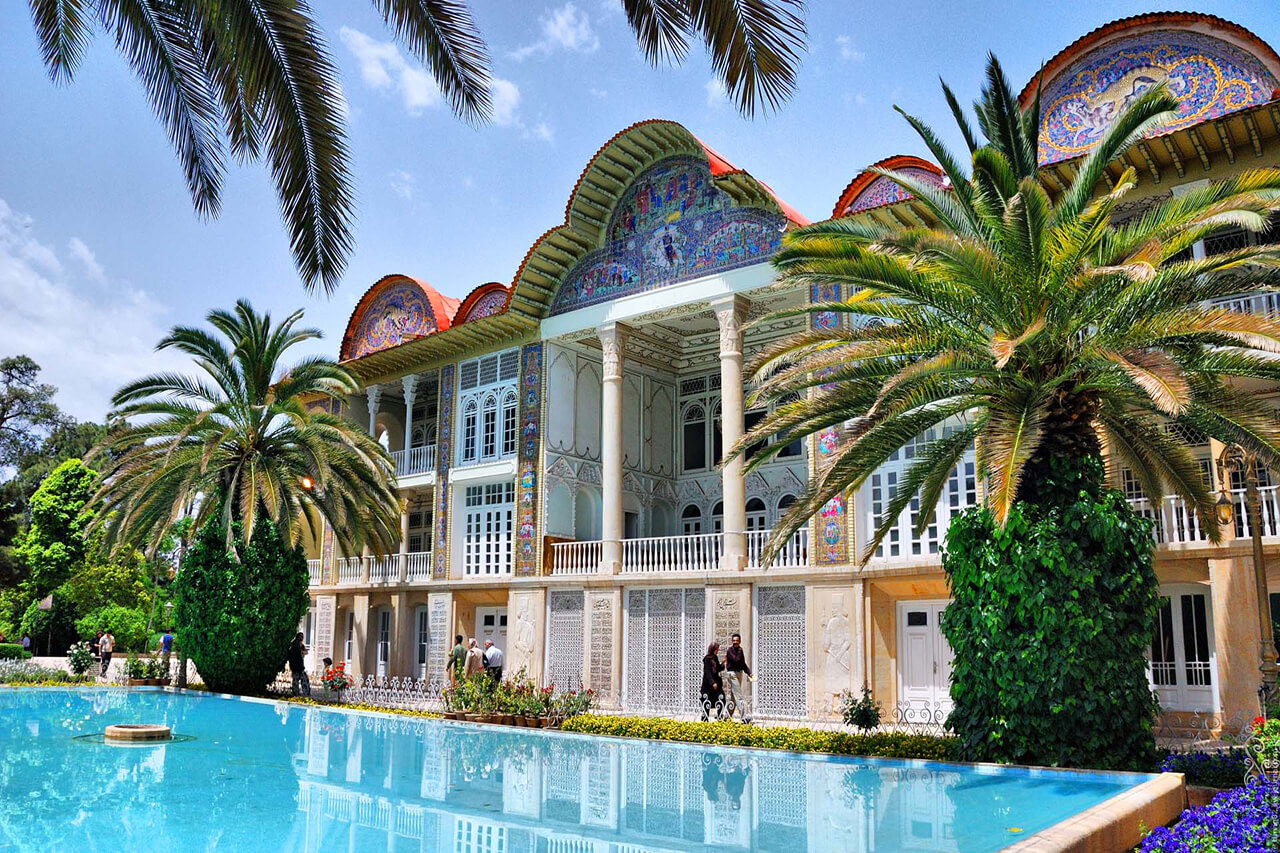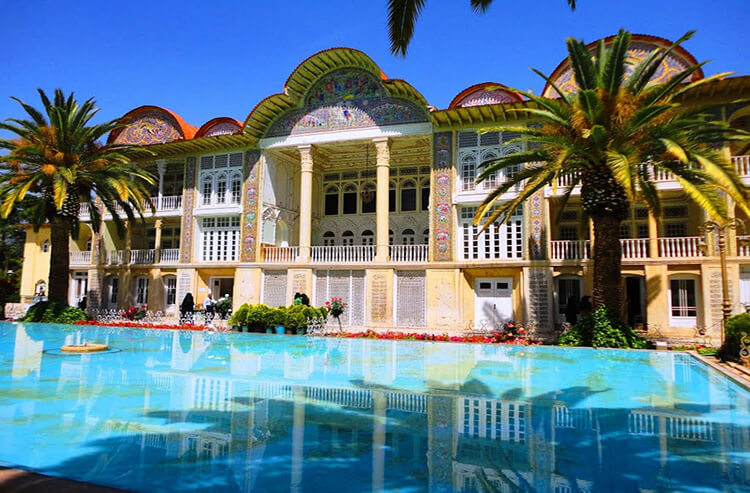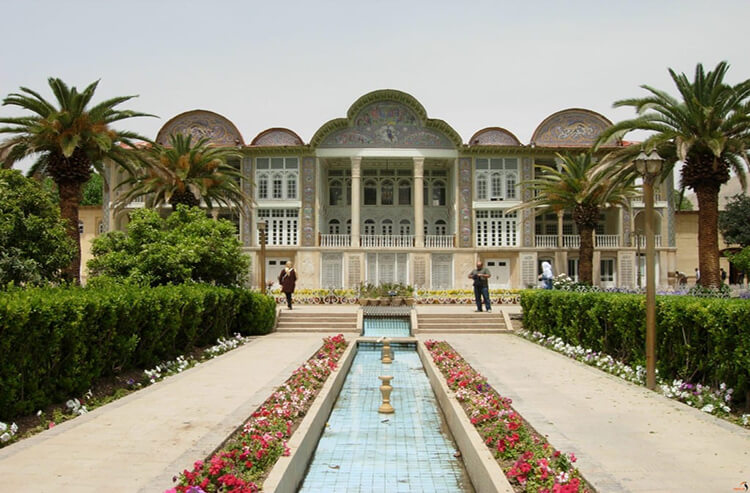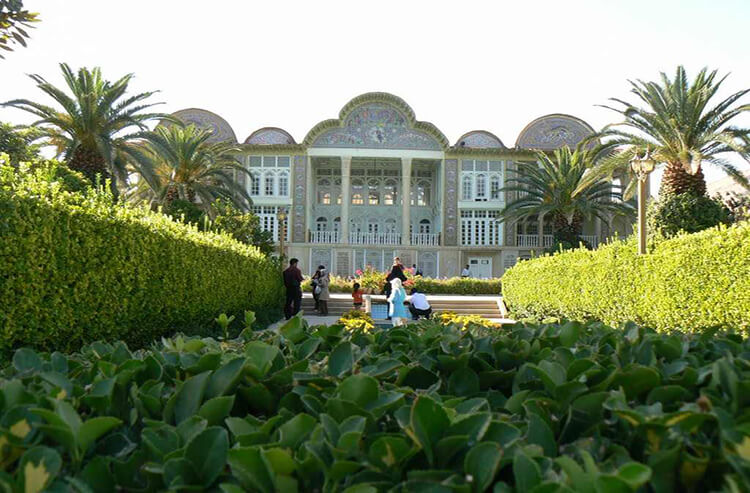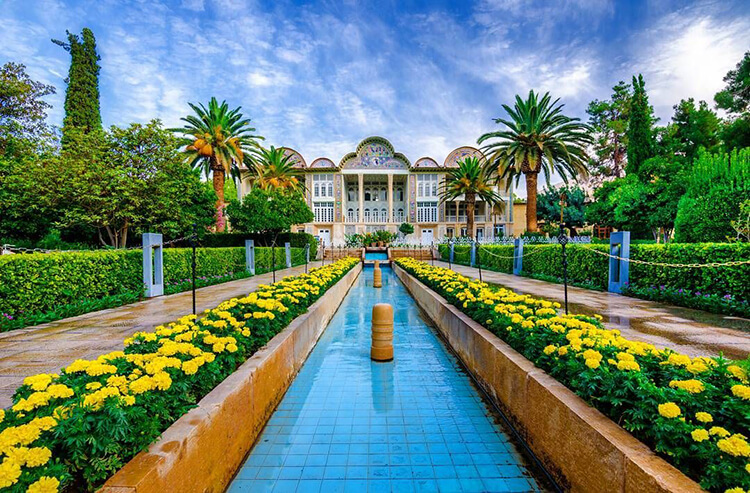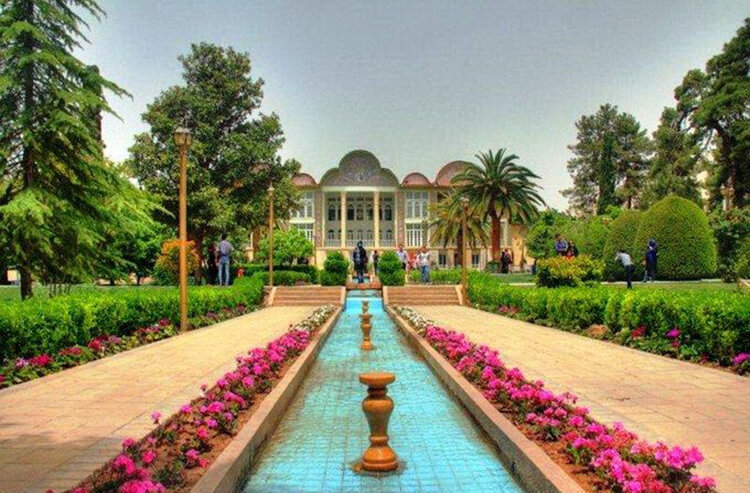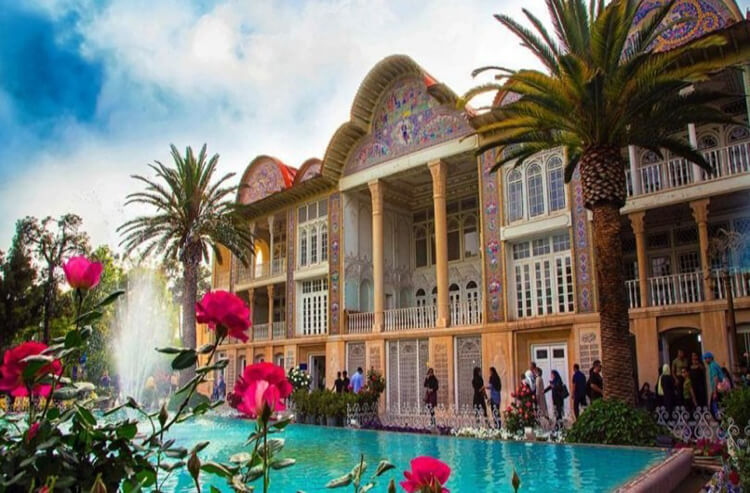ERAM Garden
Eram Garden is a historic Persian Garden in Shiraz city. The history of the garden allegedly goes back to 11th century, Seljuk era. However, it has gone through numerous renovations until late 19th century. The current 3-storey pavilion was constructed based on Safavid and Qajar style of architecture, in late 19th century. As a UNESCO World Heritage, Eram Garden Shiraz counts as one of Shiraz tourist attractions.
The word ‘eram’ is a Persianized derivation of the Arabic word ‘Iram’ which means heaven. Eram Garden was named after a legendary garden called Iram in southern Arabia, built on the order of the Arab ruler, Shaddad who wanted to depict the “beauty of heaven”. The garden, which was created along the northern shore of Khoshk River, with its lush vegetation, is in fact a reflection of paradise on earth.
Owners
Like many other historical monuments in the southern city of Shiraz, Eram Garden was restored and repaired by the Zand kings who made Shiraz their capital during the second half of the 18th century. During final years of Zand dynasty, the garden was owned by Qashqai tribal chiefs.
During the reign of Fath-Ali Shah of Qajar dynasty (1797-1834), one of Qashqai chiefs, Jani Khan and his son Mohammad Qoli Khan, commissioned the construction of the original mansion, and planted the garden with different trees including cypress, pine, orange and persimmon trees.
During the reign of Nasser al-Din Shah of the Qajar dynasty (1848 – 1896), Mirza Hassan Ali Khan Nasir al-Molk bought the garden from Qashqais, and demolished the mansion and in its place built a pavilion, designed by a famous Shirazi architect, Hajj Mohammad Hassan.
The pavilion was decorated by Hassan Ali Khan’s son Abol Qassem Khan who inherited the garden after his father.
The garden finally passed on to Abol Qassem Khan’s son Abdullah Qavam who sold it to the Qashqais once again.
Pavilion
The three-story pavilion has been based mainly on Safavid and Qajar style of architecture. There is an impluvium in the ground level of the mansion, designed for repose on lazy summer days. A small stream passes through the building, pours into a small pool, and runs out from the other end, down to a large ornamental pool in front.
The visitors of the pavilion are advised to look up at the colorful, Qajar-style tiles on the ceiling. Before proceeding upstairs, it is not a bad idea to take a look at the large kitchen situated at a corner of the house.
The middle storey has a large veranda erected on two pillars behind which lies a magnificent hall. There are tiles on the front sides of the pillars adorned with floral and equestrian designs.
On the upper floor, there is a large hall whose windows open to the main veranda letting an exceptional view to the garden.
On the entablature of the building there are three pediments ornamented with tile works. The middle pediment, being larger than the other two, shows Nasser al-Din Shah on a white horse.
Other pediments show Darius the Great, the founder of the Achaemenid dynasty; and a scene where a panther hunts a deer.
Among the trees and flowers of the enchanting garden, there is a tall, stately cypress, known as Sarv-e Naz, reportedly dating back to 3,000 years ago.
Now a property of Shiraz University, it has been turned into a botanical garden and is open to the public as a museum. The mansion has also been assigned to the university’s Faculty of Law.
